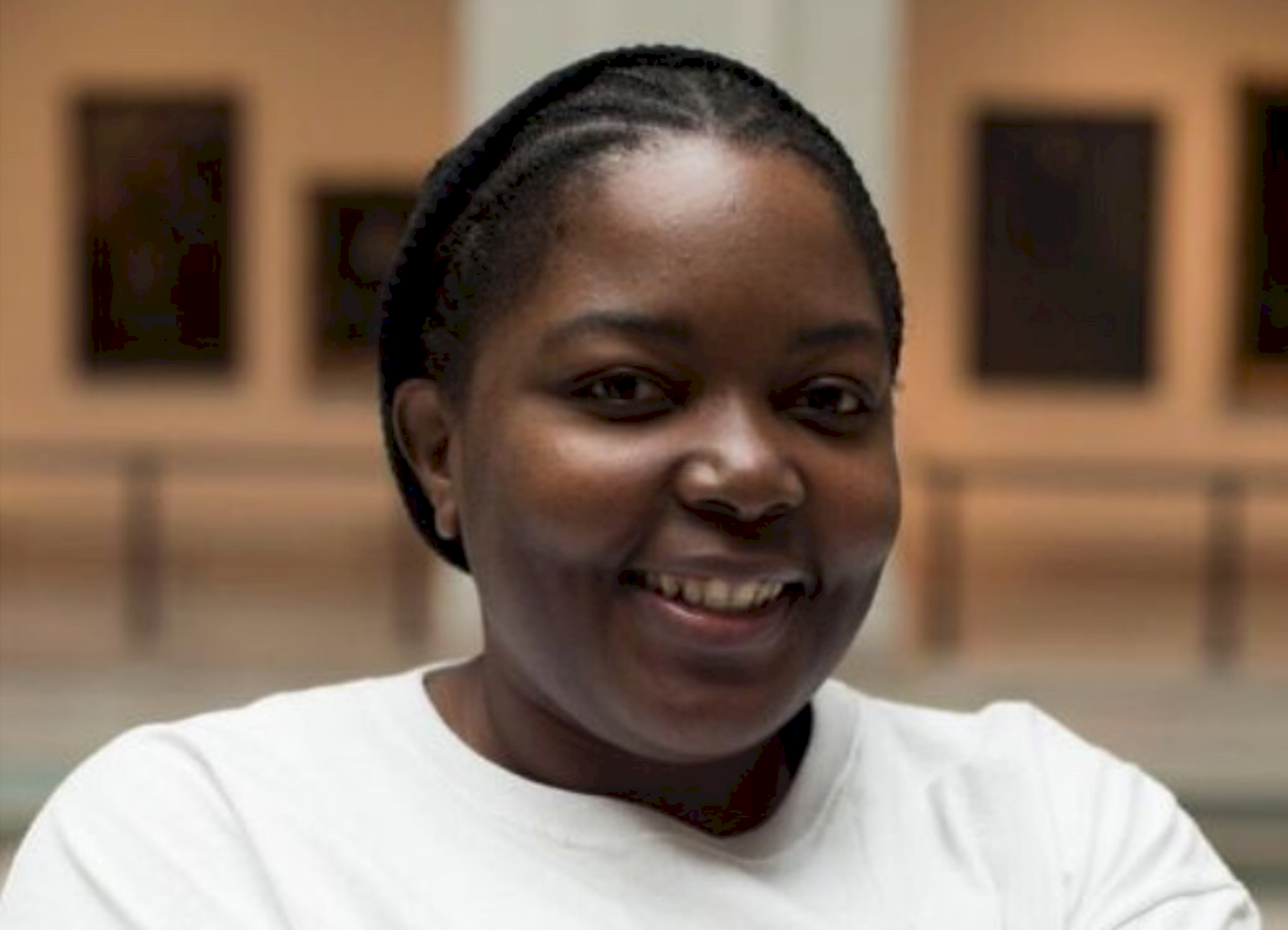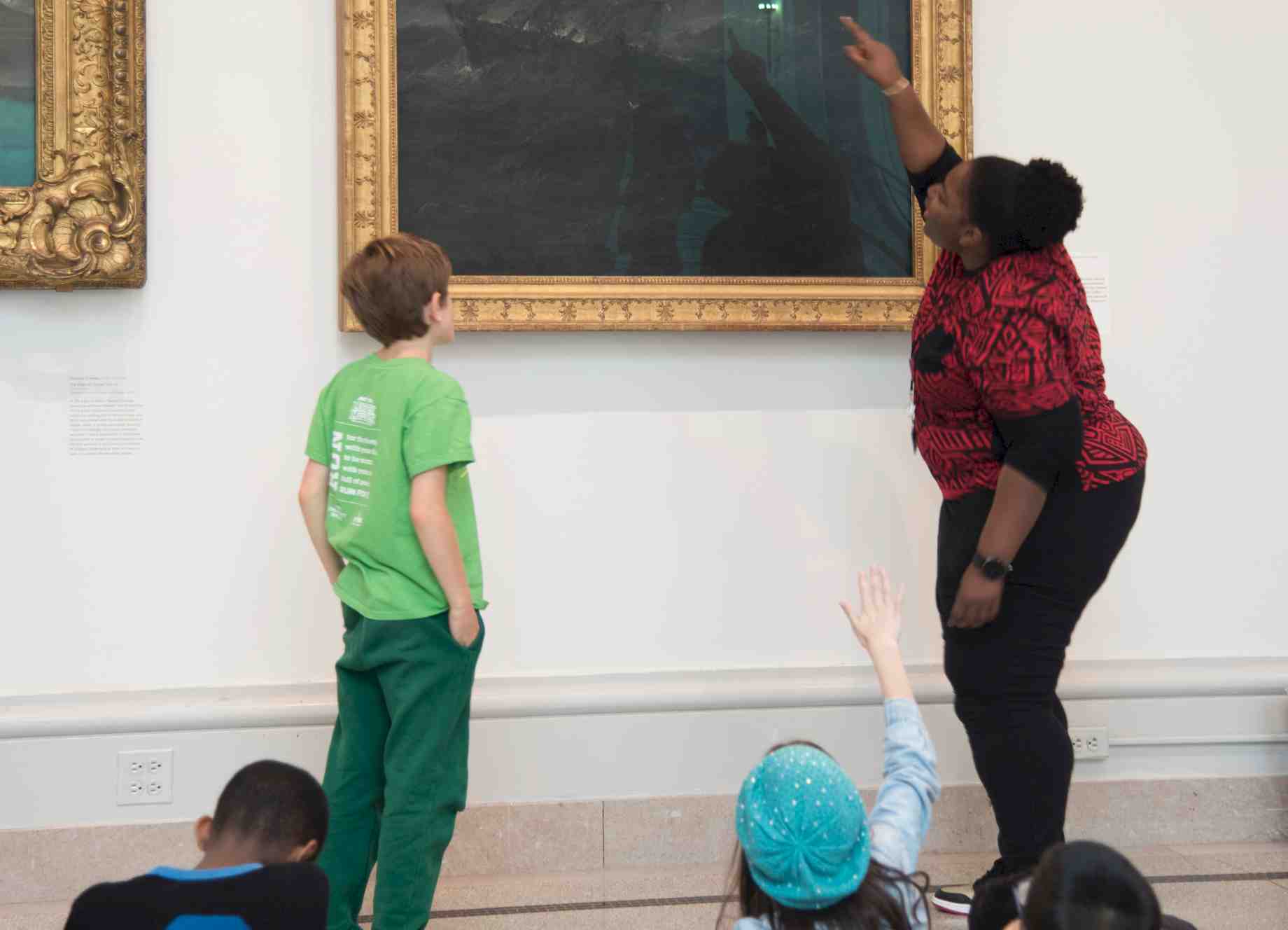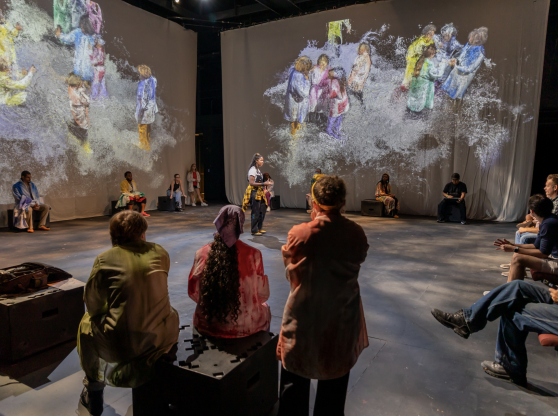Starting in 2016, UF College of the Arts School of Art + Art History alumna Midrene Lamy (B.F.A. Art ‘14) worked full time as a Fellow in the Education Division at the Brooklyn Museum, supporting several school, youth, and family programs, including the Gallery/Studio program.
She also conducted research focused on the experience of self-guided black visitors. Although the museum has a strong reputation for diverse exhibits and audiences, Lamy’s findings underscored problems with ethnic representation common among art museums that she hopes her contributions can help solve.
Lamy was inspired to research this issue out of her love for art, the Brooklyn Museum and her belief in its potential to be an institution that truly belongs to the people of Brooklyn.
“I really, really love the Brooklyn Museum,” she shared on the museum’s Tumblr page. “After working as a Museum Education Fellow and walking through the galleries each day, I became less interested in the artwork and more interested in the visitors. I observed that self-guided visitors were predominantly white and began to ask myself, ‘Where are all the black people?’”
It is no secret that diversity has become a major issue among museums. According to a study from the Center for the Future of Museums, the amount of non-white visitors to art museums has largely declined over the past few years despite minority groups becoming a larger presence in America’s population. The Brooklyn Museum has engaged in multiple efforts to fight this pattern, including their First Saturday program that allows the public to freely participate in the arts with a different cultural theme every weekend.
This approach has made the museum more welcoming to black audiences than many of its peers, but as Lamy’s research found, there are still strides the museum could make in its experience for self-guided visitors.
When she started her fellowship, the museum was displaying female African-American artist Beverly Buchanan’s Ruins and Rituals, an exhibition of 200 objects, including sculpture, painting, photography, drawing, writing and performance documentation.
Buchanan was a socially and politically conscious artist in whose work Lamy says she saw herself. She decided to investigate whether black visitors felt similarly, so she dug into a museum-wide 2008-2011 cultural identity survey and interviewed staff from the education and visitor services departments. She also created her own surveys and collected responses from 106 self-guided visitors.
She asked whether respondents cared if the museum was “reflective of [their] identity and culture” from the top down - including staff, exhibits and fellow visitors.
Thirty-one percent of her respondents identified as black, 83 percent of whom indicated they “cared a lot” about the issue. Only 11 percent of self-identified white visitors did the same.
Lamy emphasizes that this problem is by no means exclusive to the Brooklyn Museum.
“Art museums overall historically have not been spaces where one would observe a substantial presence of black and brown faces,” she said.
Although the museum has a good reputation for its relationship with black and brown audiences, she believes that says more about the overwhelming whiteness of other art museums than it does about the Brooklyn Museum.
“The Brooklyn Museum should not be satisfied with their demographics on the macro scale and focus on their in house demographics on a micro scale,” Lamy said. “Forget about how other art museum’s demographics look in comparison to them and stop being the skinniest kid in a fat camp.”
After completing her research, Lamy recommended that museum guides and educators teach from at least one object in the Egyptian galleries for an African Arts and Black History themed guided visit or lesson.
She also encouraged the museum to emphasize diversity in its Museum Guide program, which offers opportunities to college-aged students.
“It is important to note that although black visitors noted that at times they did not see themselves reflected in the space, they did feel welcome at the museum and indicated that they would return,” Lamy said on the museum’s Tumblr. “I advise the Brooklyn Museum to imagine ways it can further embrace Black audiences.”
Still, diversity is a widespread problem for public art institutions across the country. Lamy believes this can be addressed in part by remembering that audiences, as members of the public, are the ones who own these spaces.
“Give everyone from all backgrounds the opportunity to take real ownership,” she said. “This can mean community outreach, dialogue, public programming, zero economic assumptions about who can afford what, and equal enthusiasm on exhibitions as they change from which groups of people or cultures they may or may not focus on.”
Lamy considers the Brooklyn Museum to be the best in New York City. She holds that although it may not fully quench the thirst of people of color to be fully welcomed and represented, it does offer a “sip of relief.”
You can learn more about Midrene Lamy at her website, www.midrenelamy.com.
To read about her research, visit the Brooklyn Museum’s Tumblr page at brooklynmuseum.tumblr.com.




